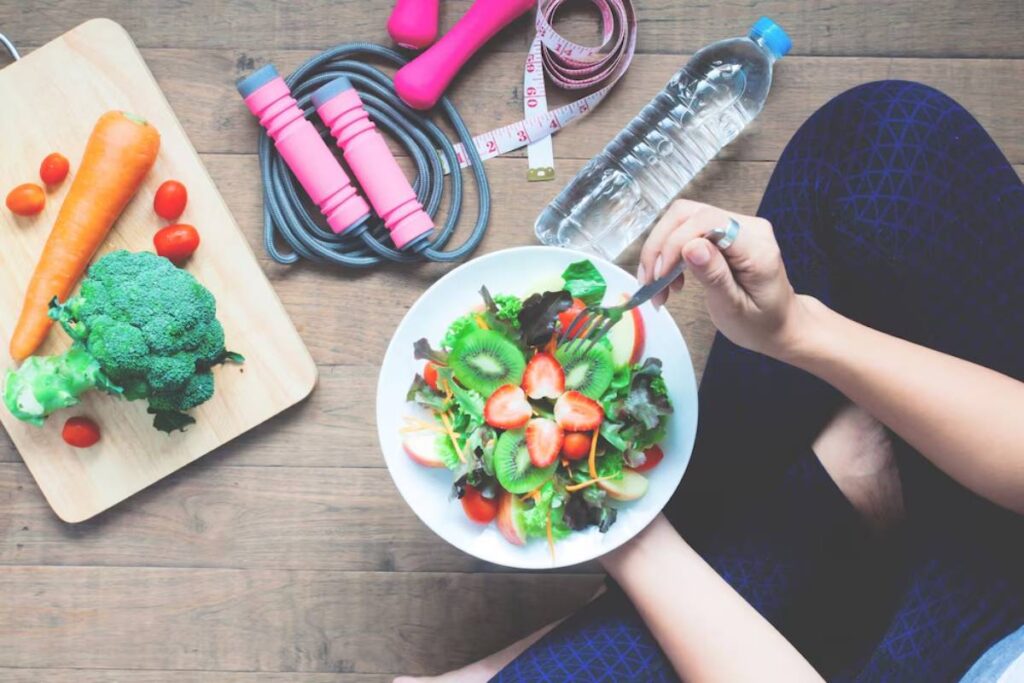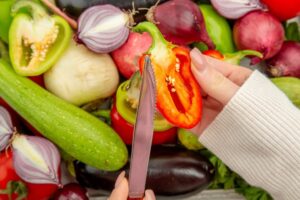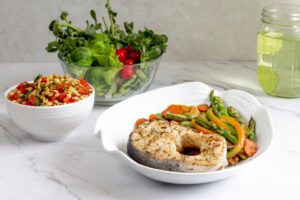The Health & Wellness Blog

Combining Exercise with an Anti-Inflammatory Diet
Chronic inflammation will be the one to watch out for. It helps evade chronic maladies like heart conditions, arthritis and type 2 diabetes. While many work on their diet or exercise alone, the combination of the two has a profound impact on overall health. This technique is an anti-inflammatory. It boosts energy, aids in weight management and enhances mental clarity as well.
This blog post will demonstrate how simply adding anti-inflammatory foods to your diet can transform your health when combined with regular exercise. We’ll touch on things like reducing oxidative stress and reducing recovery time. Look, too, for expert insights and pitfalls to avoid. This guide shares practical, science-backed advice for leading an anti-inflammatory life. It is ideal for those beginning or enhancing their wellness plan.
Why It Matters
Inflammation: The Silent Culprit
Chronic inflammation can cause serious health problems. These include heart disease, autoimmune disorders, and neurodegenerative diseases. While short-term inflammation helps fight infection, long-term inflammation quietly harms tissues and organs.
Diet and Exercise: A Complementary Approach
Both diet and exercise offer inflammation-reducing benefits on their own. Together, they create a feedback loop of healing. Exercise regulates the immune system and increases circulation. An anti-inflammatory diet provides nutrients that help repair tissues and lower oxidative stress.
“You can’t outrun a bad diet or out-eat a sedentary little. The real magic happens when you combine both,” says Dr. Lisa Renner, integrative health specialist.
Key Benefits of Combining Exercise and an Anti-Inflammatory Diet
1. Enhanced Inflammation Reduction
Exercise releases anti-inflammatory cytokines—proteins that help cut inflammation. Pair this with a diet rich in antioxidants, omega-3 fatty acids, and polyphenols, and the effects multiply. Think of this combo as a one-two punch against chronic inflammation.
Focus on these anti-inflammatory foods:
- Leafy greens like kale and spinach
- Fatty fish like salmon and sardines
- Berries, especially blueberries and raspberries
- Olive oil, nuts, and seeds
- Turmeric and ginger

2. Improved Recovery and Muscle Health
Post-exercise recovery is crucial for healing. An anti-inflammatory diet helps reduce muscle soreness and speed up recovery. Foods such as tart cherry juice, dark leafy greens, and sweet potatoes help repair muscle microtears from exercise.
3. Better Blood Sugar and Weight Control
Exercise boosts insulin sensitivity, and anti-inflammatory foods stabilise blood sugar. Together, they help manage weight and lower the risk of type 2 diabetes. Avoiding ultra-processed foods and moving daily can also lessen insulin spikes and drops.
4. Boosted Mental Health and Cognitive Function
Regular movement releases endorphins and supports brain health. Eating brain-friendly foods can help with depression, anxiety, and brain fog. Omega-3-rich fish and antioxidant-rich fruits are great choices. Brain inflammation is increasingly linked to mental health issues.
Additional Expert Tips & Common Mistakes to Avoid
Best Practices to Maximise Results
- Time your meals: Eating anti-inflammatory foods after workouts helps recovery. Try a smoothie with spinach, berries, and flaxseeds.
- Stay hydrated: Proper hydration supports nutrient transport and muscle recovery.
- Pick low-impact activities. Swimming, yoga, and cycling can help reduce inflammation. They do this without putting stress on your joints.
- Consistency beats intensity: A daily 30-minute walk is often better for the long run than occasional intense workouts.

Common Mistakes
- Overtraining without fuel: Exercising without proper nourishment can increase inflammation and fatigue.
- Ignoring rest: Recovery days are essential for reducing inflammation and preventing burnout.
- Using supplements instead of food: Omega-3 or turmeric supplements can help, but they should support a healthy diet.
- Eliminating healthy fats: Not all fats are harmful. Avocados, nuts, and olive oil are crucial for managing inflammation.
Advanced Insights and Expert Recommendations
Personalised Anti-Inflammatory Plans
Not all bodies respond the same to specific foods or exercise. Personalised plans based on genetics, gut health, and lifestyle are gaining popularity.
- Genetic testing can show how your body processes certain nutrients or handles inflammation.
- Food sensitivity testing helps you avoid inflammatory triggers like gluten or dairy.
- Wearable tech can track heart rate variability and inflammation responses to workouts.
“Customising anti-inflammatory strategies can dramatically improve results,” says nutritionist Emma Langford. “The more you learn about your own biology, the better equipped you are to manage inflammation naturally.”
The Role of Gut Health in Inflammation Control
Research highlights the gut microbiome’s crucial role in managing inflammation. Regular exercise supports a diverse and healthy gut flora. An anti-inflammatory diet includes prebiotic fibres and probiotic-rich foods that nourish beneficial bacteria.
Top gut-friendly, anti-inflammatory foods include:
- Fermented foods like kefir, sauerkraut, and kimchi
- Fibre-rich vegetables like broccoli, carrots, and artichokes
- Legumes and whole grains
- Polyphenol-rich foods like green tea and dark chocolate
Keeping a healthy gut helps regulate the immune system and control systemic inflammation. This link between gut health, diet, and movement is vital for long-term wellness.
A Lifestyle Worth Embracing
An anti-inflammatory diet plus a life led by regular exercise is no trend. It’s a sustainable approach to quieting inflammatIt’sand safeguarding your health. This is a lifestyle that enhances joint support, cognitive clarity, heart support and energy. It has advantages that medicine frequently cannot provide.
Balance is key. Feed your body whole, anti-inflammatory food. Get to moving regularly in ways you love. Leave time for resting and recuperating, too. Steer clear of typical traps, like missing meals, overtraining, or going for quick fixes.
Excited to take your vibrancy to the next level? Make small daily changes. Replace sugary snacks with fruits and nuts. Take a walk after meals. You can also batch-cook anti-inflammatory meals for the week. These habits can transform your health from the inside out, over time.
How are you melding movement and food in the battle against inflammation? Tell your story in the comments, or connect with others on their path to an active, anti-inflammatory life.









